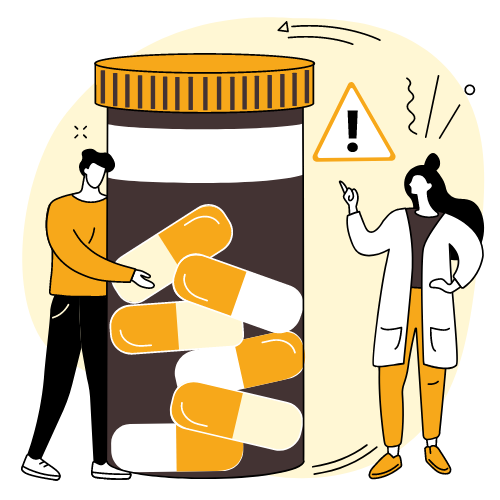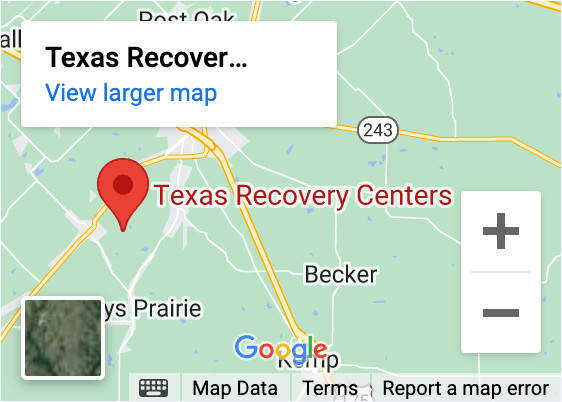The term “Fenty Fold” has emerged in social circles to describe a distinctive posture associated with fentanyl use. This alarming phenomenon represents far more than a concerning visual — it signals a medical emergency that demands immediate attention and highlights the devastating impact of America’s ongoing fentanyl crisis.
Understanding what the Fenty Fold indicates and why it occurs can help families, first responders and healthcare providers recognize when someone needs emergency medical intervention. More importantly, recognizing this sign underscores the critical need for comprehensive addiction treatment for anyone struggling with fentanyl use.
Understanding the Physical Manifestation
The Fenty Fold describes the characteristic bent-forward posture that individuals may assume while under the influence of fentanyl. This position typically involves the person bending forward at the waist while remaining upright, often appearing frozen in place despite being conscious. The posture results from fentanyl’s powerful effects on the central nervous system and muscle control.
This physical presentation differs significantly from other substance-related behaviors. Unlike alcohol intoxication, which might cause swaying or stumbling, or stimulant use, which often increases activity and alertness, fentanyl creates this distinct rigidity combined with decreased responsiveness to surroundings.
The fold position isn’t voluntary or comfortable — it represents the body’s response to fentanyl’s overwhelming impact on neurological function. Individuals in this state often cannot respond normally to verbal commands or physical touch, even though they may appear awake.
Why This Posture Indicates Danger
When someone displays the Fenty Fold, their body is experiencing severe respiratory depression and altered consciousness. Fentanyl’s potency — estimated to be 50 to 100 times stronger than morphine — overwhelms the brain’s ability to regulate essential functions like breathing and heart rate.
The bent posture can compromise breathing even further by restricting airway passages and reducing lung capacity. This creates a dangerous cycle where already suppressed respiratory function becomes even more limited due to physical positioning.
People in this state hover dangerously close to complete respiratory failure. The difference between the Fenty Fold and fatal overdose often comes down to minutes. The person’s unresponsiveness to normal stimuli indicates that their brain is severely impacted by the drug’s effects.

The Broader Fentanyl Crisis in Texas
Texas has experienced a dramatic surge in fentanyl-related deaths in recent years. The drug’s potency means that even tiny amounts — equivalent to just a few grains of salt — can cause fatal overdoses. Many people unknowingly consume fentanyl when it’s mixed with other substances or sold as counterfeit prescription medications.
Fentanyl’s prevalence in the drug supply has transformed the landscape of addiction and overdose risk. Unlike previous opioid crises, fentanyl’s extreme potency leaves virtually no margin for error. People who previously used other opioids safely may find themselves in life-threatening situations when they unknowingly encounter fentanyl.
The drug’s rapid onset and short duration can lead to repeated use throughout the day, increasing overdose risk each time. Many individuals become trapped in cycles of use that quickly spiral beyond their control, leading to the severe symptoms associated with the Fenty Fold.
Recognizing a Medical Emergency
If you encounter someone displaying the Fenty Fold or similar symptoms, treat the situation as a medical emergency. Call 911 immediately and provide clear information about the person’s condition and suspected fentanyl use. Emergency responders need this information to prepare appropriate life-saving interventions.
While waiting for emergency services, try to keep the person awake and breathing. Speak loudly to them, tap their shoulders firmly and try to position them to keep airways open. If they become unconscious, place them in the recovery position on their side to prevent choking.
If naloxone (Narcan) is available, administer it according to package instructions. However, fentanyl’s potency often requires multiple doses of naloxone, and the effects may wear off before the fentanyl fully clears the system. Professional medical intervention remains essential even after successful naloxone administration.
The Urgent Need for Professional Treatment
Anyone who has experienced the Fenty Fold or similar fentanyl-related symptoms needs immediate professional addiction treatment. The fact that someone has survived to this point represents an opportunity that may not come again — fentanyl’s unpredictability makes each use potentially fatal.
Traditional approaches to opioid addiction may require modification for fentanyl users due to the drug’s unique characteristics. Medical detox becomes particularly crucial given fentanyl’s potency and the severe withdrawal symptoms that typically follow cessation of use.
Comprehensive treatment must address both the physical dependence on fentanyl and the underlying factors that contribute to continued use despite obvious dangers. This includes mental health support, behavioral therapy and long-term recovery planning that acknowledges the heightened risks associated with fentanyl addiction.
Family and Community Response
Families watching a loved one struggle with fentanyl use face an agonizing reality — every day of continued use carries the risk of fatal overdose. The Fenty Fold serves as a visible reminder that the window for intervention may be rapidly closing.
Professional intervention services can help families navigate the complex process of getting their loved one into treatment. Given fentanyl’s dangers, waiting for the person to “hit bottom” or seek help independently may mean waiting too long.
Communities must also respond with expanded access to naloxone, education about fentanyl’s dangers and readily available treatment options. The scope of the fentanyl crisis requires coordinated community-wide responses that prioritize immediate access to life-saving interventions.
Hope Through Professional Treatment
While the Fenty Fold represents a frightening symptom of fentanyl’s devastating effects, recovery remains possible with appropriate professional support. People can and do recover from fentanyl addiction when they receive comprehensive treatment that addresses the unique challenges this substance presents.
Treatment success often depends on immediate access to medical care, evidence-based addiction treatment and ongoing support systems that recognize the long-term nature of recovery. Every day of sobriety represents a victory against a substance that allows little room for error.
If you or someone you love is struggling with fentanyl use or displaying symptoms like the Fenty Fold, don’t wait for tomorrow to seek help. Texas Recovery Centers provides comprehensive addiction treatment designed to address the unique challenges of fentanyl addiction. Call 888-354-2194 immediately to speak with our experienced team about life-saving treatment options that can help break the cycle of fentanyl use before it’s too late.













